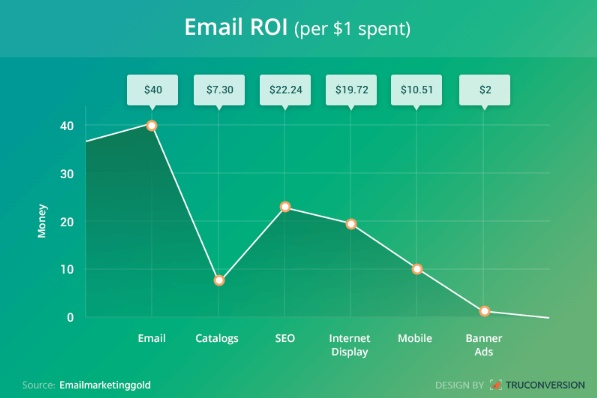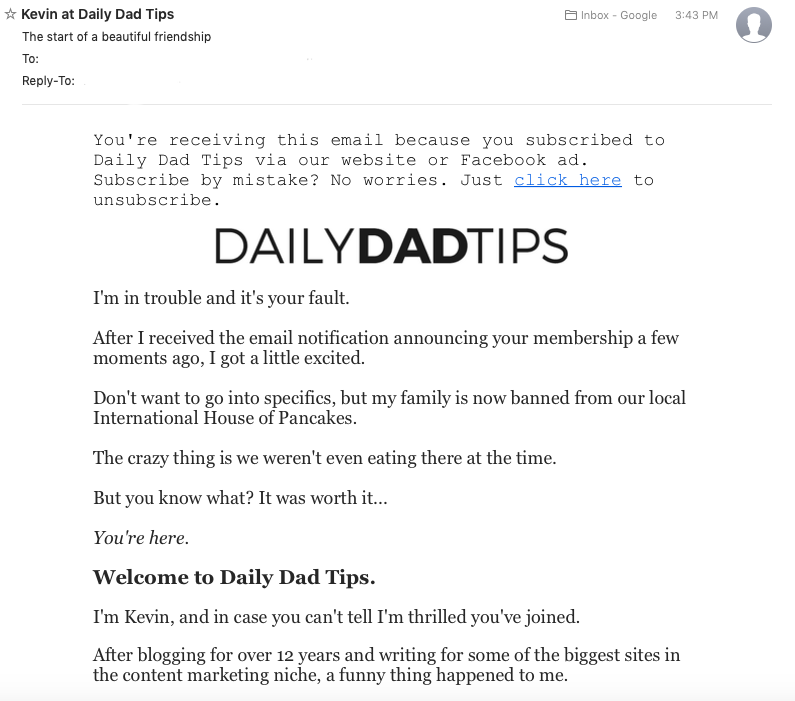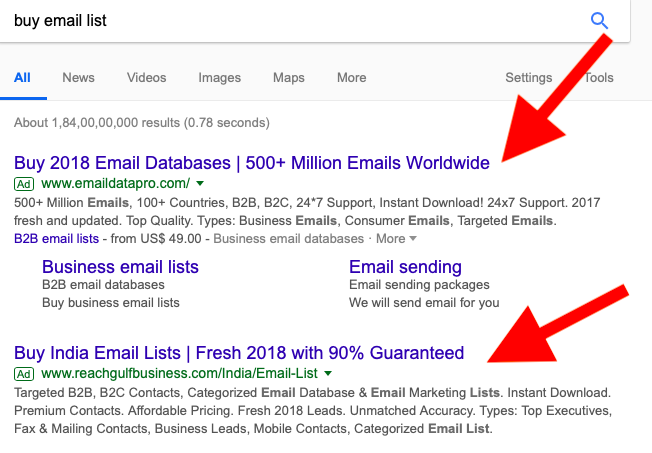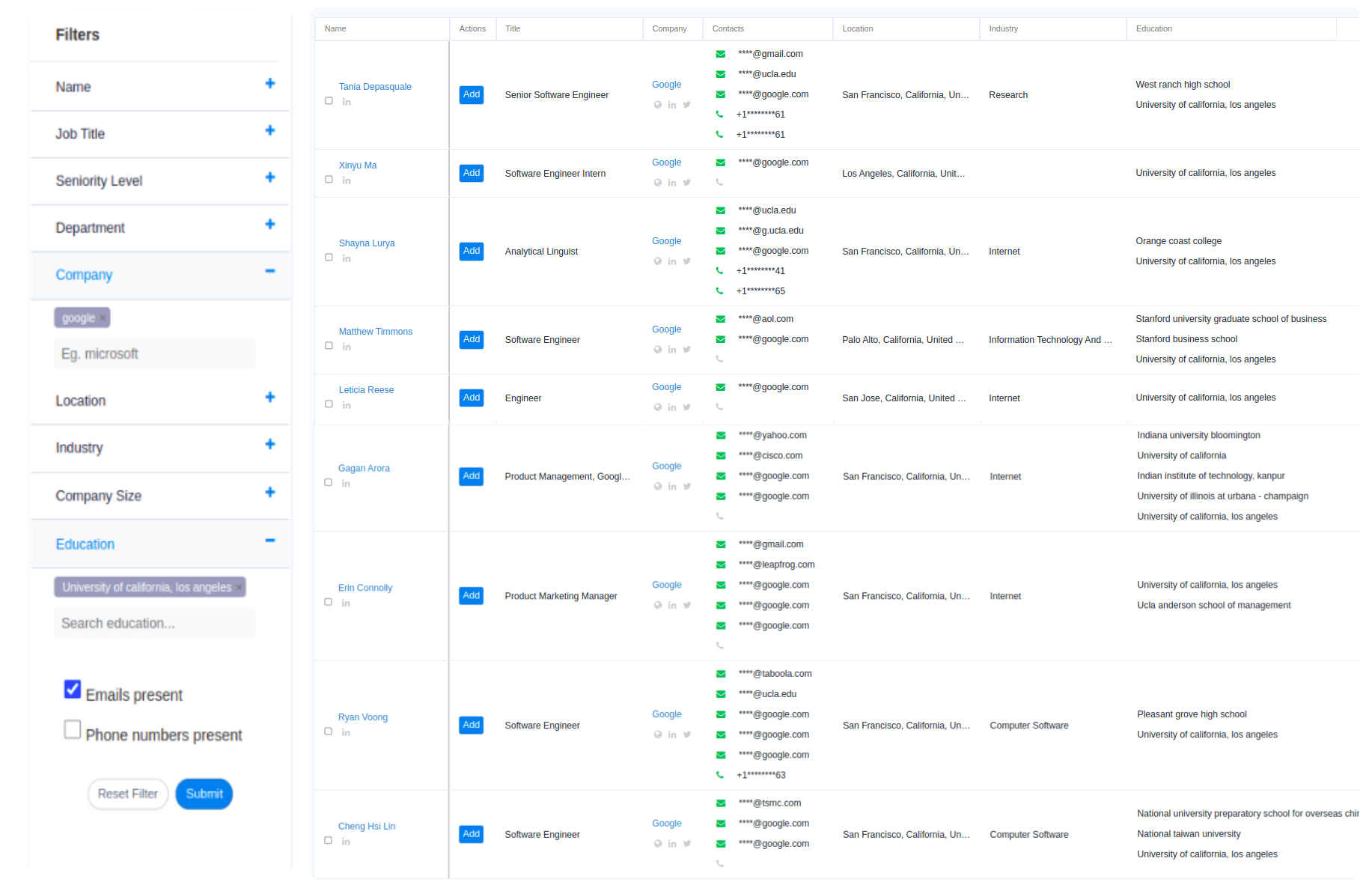Running an Email marketing campaign is one of the best ways to get some new audience for your business website.
According to a report, on average, email marketing has the highest overall ROI in comparison to other marketing techniques.
For every $1 spent on email, you get $40 ROI. That makes it around 4,000% of the return.
That’s quite an impressive number.
However, it is equally easy to make some common mistakes that might end up hurting your whole email marketing efforts.
There are so many things that can go wrong under your own eyes, sometimes without even you knowing about them.
In this post, you will get to know about some of the most common email marketing practices that stand a huge chance of hurting your email marketing campaign.
1. Not Making Your Subscriber Feel “Welcomed”
Someone just subscribed to your email newsletters.
That’s pretty awesome.
But your work doesn’t end here. Now that you are fresh in your subscriber’s mind, you should immediately send them a welcome email. And if you are not doing that – then you are missing out on a golden chance.
So they just subscribed and now is your duty to welcome them. Don’t take more than a couple of seconds before sending an automated email to your subscriber because who knows where else would he/she move on to in the next couple of minutes?
And if you are not doing this then you know why you are not being able to turn your subscriber into your permanent client. It all stems from a lack of interaction on your part.
So go ahead. Welcome them and tell them a bit about your brand and make it clear why subscribing to your mail newsletter is a good decision.
Your welcome email sets the tone for all emails to follow; as such, it plays a vital role in future conversions.
What’s the best way to do it?
Personally, the best to do it is by being lighthearted and funny like this example below.
That said, not every company can be as light-hearted in their email. For example, you don’t really expect a financial consultancy firm to write an email like this, right?
So they can be professional and a bit more straightforward in their approach.
However, whatever your approach is, there are a couple of things that your email cannot avoid:
- Welcome your reader
- Introduce yourself or your business
- Tell them what’s in store for them
If you include these three elements in your welcoming email than it will be geared for a wonderful start. If not, then this is one wrong practice
2. Buying Your Subscribers
If you are searching on Google for “where to buy email list”, you will probably see something like this:
But do you think that getting through with this is a good idea?
If yes, then think again.
If you still can’t fathom what can wrong after you buy an email list, then have a look at these facts:
- You can be Blacklisted by your Internet Service Provider.
- Your email service provider can fire you.
- Viewed as a spammer by those who you email on that list.
This is something that wouldn’t want yourself to be associated with, otherwise, you will be causing irreparable damage to your email marketing campaign.
So how can you grow your email list organically without turning to unethical means?
- Make sure to include relevant or valuable content on your website. However, if your content border on SPAM then the user would not probably think twice before exiting, forget about subscribing.
- Offer your audience something in return of subscribing to your newsletters. For example, you can offer a free e-book or a first-time discount coupon and more.
- Let your audience know why do you want their email address? What will they get in exchange?
- Tell them how often will you email them? Because no one wants to be pestered twice a day!
3. Giving Precedence To Quantity Over Quality
If you are tirelessly chasing huge numbers instead of quantitative subscribers then you are simply wasting your time.
Because even if you have a few subscribers and maximum of them are turning into your permanent paying customers juxtaposed to a humongous list of subscribers who are not even interested in your services – then you are better off with the former situation.
Apart from this, the reason why a large list isn’t necessarily a good thing is that – rather than focusing on engaging with your most productive leads, you would be stuck with a clutter of irrelevant leads.
So keep your email list concise and clutter free and follow these steps to turn your subscribers into your permanent clients:
- Run a re-engagement campaign – If you notice that many of your productive leads are not really showing interest after subscribing to your email newsletter then re-engage them by sending re-engagement emails. Send a personalised email and give them enough reasons to invoke their interest in your content.
- Offer frequency options – Tell your subscribers beforehand about your newsletter frequency. Plus, if you send an email every other day, then at the end of the week send an email asking your subscriber whether they would like to switch to a weekly or biweekly email newsletter option.
- Segment your list – If you really want to improve conversions, break your list into segments depending on demographics like age, income, jobs or gender. Creating content targeted to these groups will work wonders for your conversion.
4. Being Vague about what the subscriber should expect
We have talked about how you should always send an obligatory welcoming email to your new subscribers. However, just welcoming them is not nearly enough.
Your welcoming email should also consist of the things what the subscribes should expect from you. All in all, this email should set expectations about what kind of content you are going to send your subscribers and how often.
If you fail to follow through with an email articulating your expectations, you are in for some shocking stats:
- 21% of email recipients report email as Spam, even if they know it isn’t
- 43% of email recipients click the Spam button based on the email “from” name or email address
Have a look at the guidelines when it comes to setting your subscribers’ expectations:
- Content to be expected – Tell your audience clearly what you will put in your newsletter and how it will help them out. Why is it so important that the subscriber will go to the lengths of reading it?
- How often will you send the content? – Make sure your potential subscriber knows how many email newsletters to expect from you. Don’t just randomly send out content as per your wish. Set a time and day and let your audience know about it so that they know when to expect something new from your side.
Also, don’t forget that as important setting expectations are, even more, important is to meet those expectations. If you promised to send an email twice a week on say, for example, Tuesday and Friday, then you have to stand by it. Otherwise, if you end up breaking the promise then your subscribers will not only be disappointed but not see you as a potential partner to do business with.
5. Writing Irrelevant & Uninteresting Content
You are busy churning out content for your audience. You might be wondering – why the extra emphasis on “your audience”?
To let it seep into your mind that you are writing for your audience. And you have to come up with something useful and interesting enough that the people will spend a couple of minutes actually reading your content.
Otherwise, they will either end up deleting your mail or if they find your content constantly boring than they won’t think twice before finally “unsubscribing” from the newsletter.
Thus, you need to send them useful content that tells them you care about them. Plus, don’t make your content bland and uninteresting. Using dedicated services, like a grammar checker or term paper service will help you ensure the top quality of your content pieces. Always remember that humor and wit work like a charm. So try to show your funny side to keep the reader engaged enough that they read the content till the end.
6. Not Having a Clear Call to Action
As you have probably been told before, you need to include a clear and interesting call to action (CTA) in your email. Whether it is your blog landing or your email. Because eventually, your main aim is to redirect your visitor to your landing page.
If you don’t include a call-to-action then your subscribers are likely to open your mail and they will simply exit the delete that email.
What purpose did it solve?
Nothing, right?
So before you compose your email, start with a clear vision of its purpose in mind.
What is the purpose of your email marketing campaign?
Do you want the subscriber to buy something from you? Or do you want them to register for your webinar?
Focus your email’s text, images, and design to guide your readers toward this outcome. Then make sure that the text of your call-to-action aligns with the goal you hope to achieve.
Have a look at these guidelines for your call-to-action button
- Easy to find – Don’t let your CTA go unnoticed. Use bright colours, attractive and engaging text to make it stand out. Plus, don’t forget to make it appropriately large and then display it in the right place in your email content.
- Use personalised words – If you use witty and personalised text rather than boring and vague words, more people are likely to lick on your CTA button.
- Don’t mislead the audience – don’t resort to misleading your audience or making your CTA a click bait to get more traffic because having a traffic without ethics is not going to help you out anyway.
- Repeat more than once – Repeating the call to action multiple times allows your reader more opportunities to notice and interact with it.
7. Not Paying Close Attention to Analytics
I am sure that you are doing something to measure the success or failure of your email marketing campaign?
So what are you paying attention to?
Probably at your open rate. But if you are just paying attention to your open rate and disregarding every other analytic then you are in for a surprise. While looking out for your open rate demographic is important, it’s better to keep your eye on total clicks and many other parameters.
Have a look at these metrics that you can’t ignore
- Clicks
- Soft Bounces
- Hard Bounces
- SPAM Complaints
- Unsubscribes
Open rate along with all these metrics define how well your email marketing campaign is faring. Beware, if those metrics are low, you could start missing the inbox and land in spam. You should follow the best practices to avoid landing in spam.
Now you know the wrong practices that you might have been guilty of. However, reading these mistakes closely you can not only avoid them but also follow the guidelines that will channel your email marketing campaign in the right direction.






